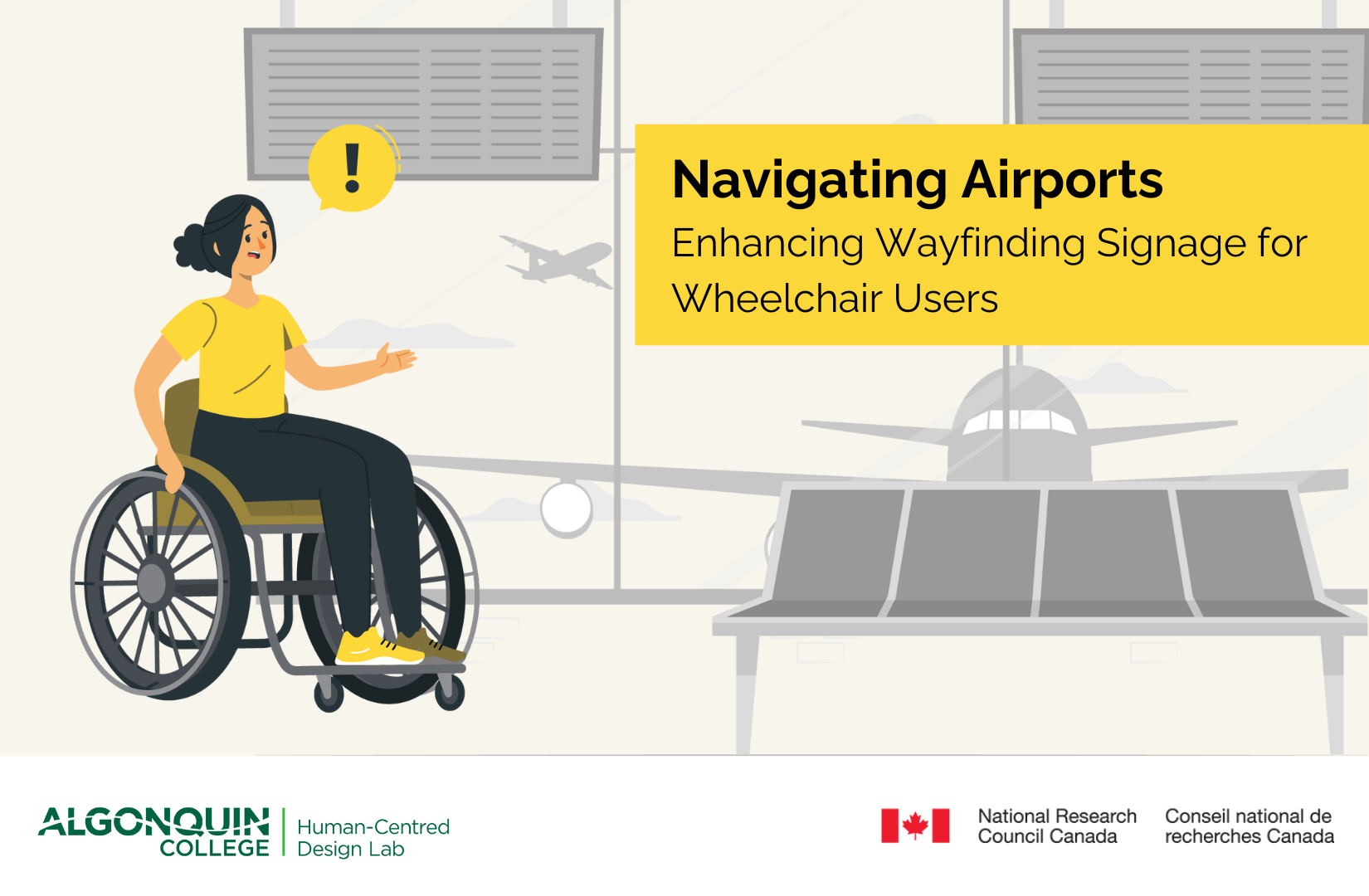Wheelchair-Friendly Airport Wayfinding
Posted on Thursday, July 11th, 2024

| Client | National Research Council Canada |
| Professor(s) | Jed Looker Raphael Joseph |
| Program | Interdisciplinary Studies in Human-Centred Design |
| Students | Tharun Raj Sivakumar, Shreyansh Raghuvanshi, Namrata Vivek Kambli, Kaneesha Andeso, Jean Jenson Grace |
Project Description:
This project embarked when the Center for Air Travel Research in Canada reached out to our class with a problem: How can we improve a passenger’s air travel experience? Air travel is a mode that has been used by many for years. Despite having policies and guidelines that are used to ensure a satisfactory user experience, many passengers have encountered negative air travel experiences.
Our team consequently opted to focus on wayfinding, with a strong emphasis on wheelchair users over the age of 18. Our area of focus was improving signage to enhance the wayfinding experience for wheelchair users, making navigation more accessible and inclusive hence our problem statement:
How does current airport signage affect wheelchair users’ wayfinding experience?
We began by conducting a literature review to gain a comprehensive understanding of existing efforts to facilitate navigation for wheelchair users, as well as to explore the airport and signage policies and guidelines that are followed when designing wayfinding facilities.Having found that there is a clear gap between the policies and guidelines given and the airport wayfinding facilities, it was time to now conduct our research to find out whether the airport wayfinding facilities in play hinder, or contribute to a wheelchair user’s wayfinding experience.
We learned how to conduct a mixed methods study consisting of a questionnaire and semi-structured interviews. We used UX research practices to design, test, and iterate a questionnaire, which received 47 responses from a diverse range of participants. We then conducted 14 interviews in total from both our participants and SMEs, to get a deeper understanding of the “why” of the questionnaire responses. Next, we organized all of the qualitative and quantitative data to conduct comparative analysis. After analysis, we developed insights and recommendations based on what we found in our research.
Having gathered the qualitative and quantitative data, we made a conscious effort to sort them in a manner that enabled comparison. Based on this analysis, we were able to come up with interventions and possible designs that would help in tackling the observed problems.
Our research indicated that the current wayfinding and signage at airports do not effectively meet the needs of wheelchair users. The signage frequently lacks context and is poorly positioned, failing to provide wheelchair users with the required reassurance while navigating the airport. Our proposed design attempts to eliminate passenger doubt and confusion while increasing wheelchair users’ independence while navigating, which they highly value.
In summary, our project emphasizes the need of inclusive and accessible navigation solutions in airports, as well as the need for improved signage to properly support wheelchair users. Having navigation maps with clear markings of accessible features empowers wheelchair users to navigate airports independently and confidently, enhancing their overall travel experience.
Video Presentation
Gallery
|
|
|
|
|
|
| |